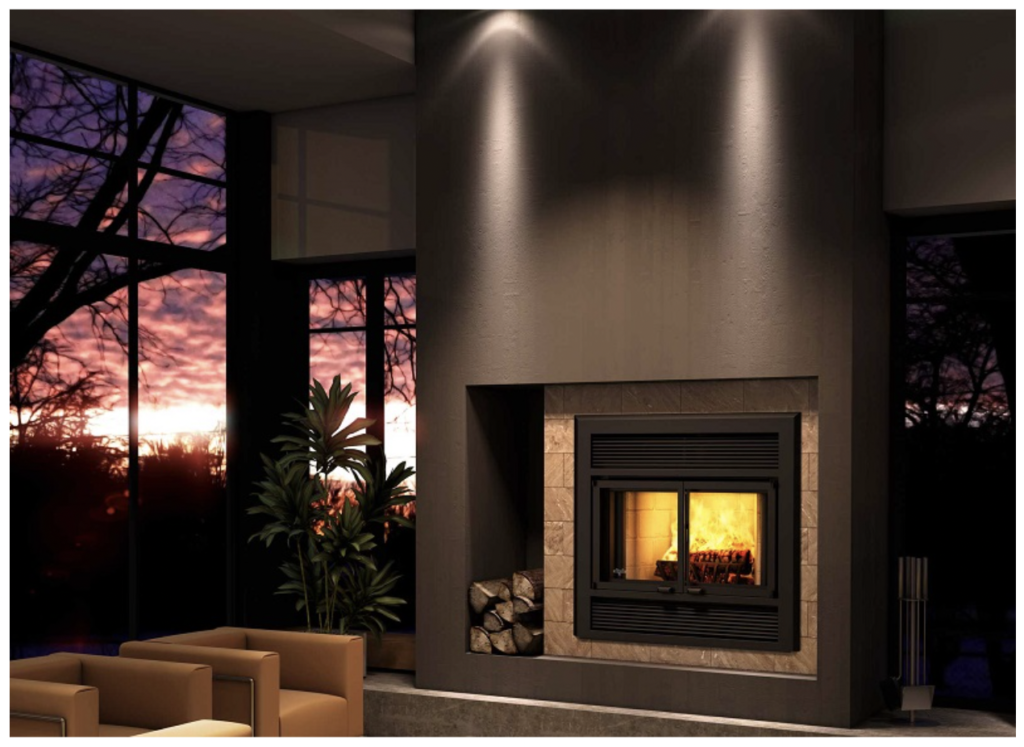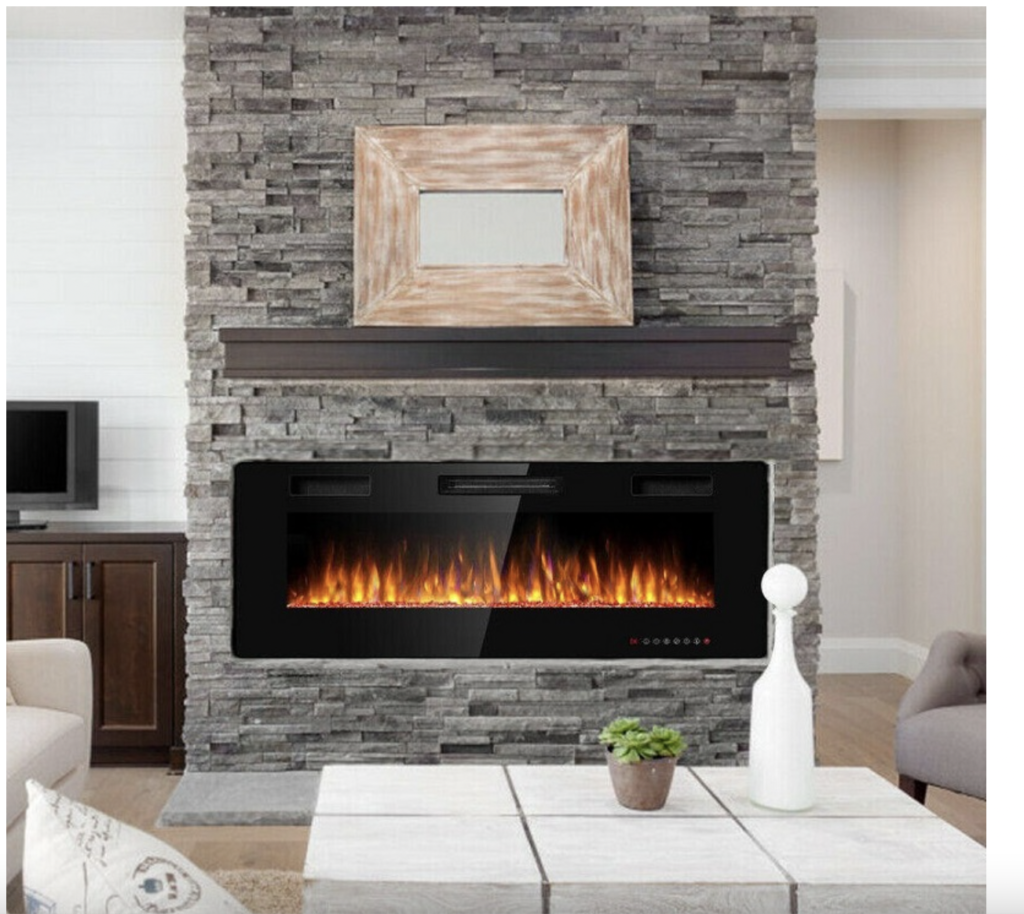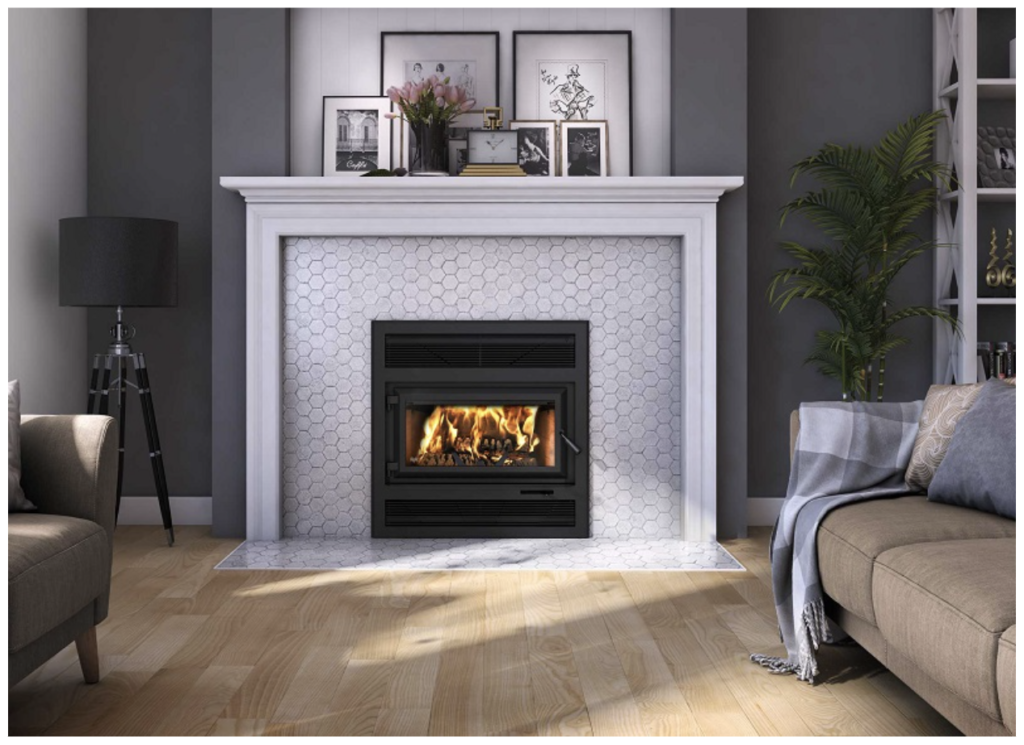
A chilly evening spent relaxing with a cup of fine tea mixture and a fire in the hearth is something everyone enjoys. Traditionally used as a place to cook and a source of heat, today’s fireplace is more of a treasured ornament than a need – but a sought-after one.
Fireplaces are a popular addition to houses because they bring beauty to any space while also being a useful heating source and a gathering spot for friends and family. Several options are available if you plan on installing a fireplace in your house, including flameless, electric, and gas models that use less energy.
But with all these options, how do you know which one to choose? Here is what you need to know about these elements to pick the one that suits you, your family, your lifestyle and your home.
Types
Although every fireplace provides heat, how it generates it distinguishes one from another. That said, you can find fireplaces on the market that are fueled by wood, gas, or electricity.
Wood
What you envision when you think of a fireplace is what a wood-burning fireplace does: it burns wood to produce heat and light. You have a range of options such as open hearths, enclosed or inserts, closed combustion stoves, and free-standing fireplaces.
But because you’ll be burning wood, you’ll frequently need to think about a chimney or other type of ventilation to go with this type of fireplace, which means that the installation and design process will be more difficult than with other fireplace types and better suited to those who are renovating or building a house from scratch.
Gas
A gas hearth is the middle ground between an electric fireplace and a classic wood fireplace. It is frequently powered by natural or propane gas and is easily controlled by rotating a knob to alter the amount of gas delivered to maintain the fire.
Similar to building a wood-burning fireplace, installing a gas fireplace can be challenging since you must connect the fireplace to the gas main, which can be challenging in older homes.

For those who prefer the warmth of a wood or gas burner but lack access to ventilation or a gas mains connection, electric models are ideal. As you might imagine, electric models operate by just being plugged into an electrical outlet. But, if you’re not careful, your energy bill could make you feel a bit hot under the collar.
Electric units are the best choice for people who wish to include this feature in their homes without rebuild the structure entirely. Another advantage is the ability to set most electric versions to “flame only,” which offers you a cosier atmosphere without making you sweat.
Different Designs
After selecting the fuel type, the next step will be to pick a design. Whether you want a farmhouse fireplace to be the focal point of your living room or a minimalist corner element to make your living room more welcoming, you won’t have trouble finding it.
Built-in Inserts

Homeowners who wish to maintain the traditional design of their classic hearth fireplace while reaping the financial and safety benefits of a gas fireplace tend to go for a built-in insert fireplace. Note that some communities provide tax breaks to encourage customers to convert their wood-burning hearths to gas fireplace inserts.
Free Standing
Freestanding hearths that are vent-free are more portable than vent models , allowing homeowners to pack them up and store them during the summer months to conserve room.
Open Hearth
An open heart is built directly on the wall and can be stone or brick. For direct ventilation, a flue and chimney are used in this conventional fireplace design. For decoration, some alternatives include a fireplace mantel (shelving or beam) on top of the fireplace. This design is timeless and attractive, yet it can be costly to build.
Wood-Burning Stove
This small fireplace uses a semi-detached stove to burn wood. Wood stoves are made of various materials, such as cast iron, sheet metal, or tile, making them adaptable to your aesthetic preferences. Because they are so efficient at heating an entire house, this kind is quite popular in cold-weather settings.
Traditionally, this fireplace is located in the kitchen or living room and is fed with pieces of wood around the clock. As with wood-burning and gas stoves, it’s critical to have carbon monoxide and smoke detectors and a fire extinguisher on hand to meet safety standards.
Size
How big should my fireplace be when compared to the size of my room? To find the answer to that question you’ll need to measure the dimensions of the room where it will be placed. Once you’ve measured the length, width and height of your room, multiply these three values to get the volume of the room, then multiply that number by four to get a close minimum heat output. With the original dimensions, you can choose an appropriate size.
While heat production is crucial, most people no longer rely on a fireplace as their sole heat source, so size is the most significant consideration when choosing one. You’ll want a fireplace that doesn’t dominate a tiny space or get swallowed up in a large one.
If you’re getting a fireplace primarily for aesthetic reasons, divide the breadth of your mantel’s shelf by two. Then, just make sure it’s not wider than the distance between the centre of the fireplace and any wall, door, window, or shelf.
Installation and Placement
When deciding where to put your fireplace, consider not only what looks beautiful and fits your lifestyle, but also what is realistically possible in terms of installation.
Vertical flues, non-combustible surround materials, and council approval are just a few of the numerous requirements that typically accompany wood fires. An electric fireplace or gas heater can be a better option if you want a fireplace with greater versatility and less installation work.
In order for it to pass through the ceiling, the walls, or even the floor, you should look for a flexible flue system. As a result, the gas fireplace can be placed practically anywhere in the house, including in the midst of a room, an apartment complex, or a two-story house. They are also perfect for retrofitting due to this.
Although there are fewer installation constraints for electric units than gas or wood ones, you will have to make a heat output trade-off, and the flames won’t look as authentic.
Regardless of the type, are a few factors to consider when deciding where to place this element. Do you want it to stand out or blend in? Do you plan to use it mainly for decoration or as your primary heat source? Will entertainment or TV watching take place in the space?
What you do in the room will ultimately influence where the fire is, so consider these factors.
